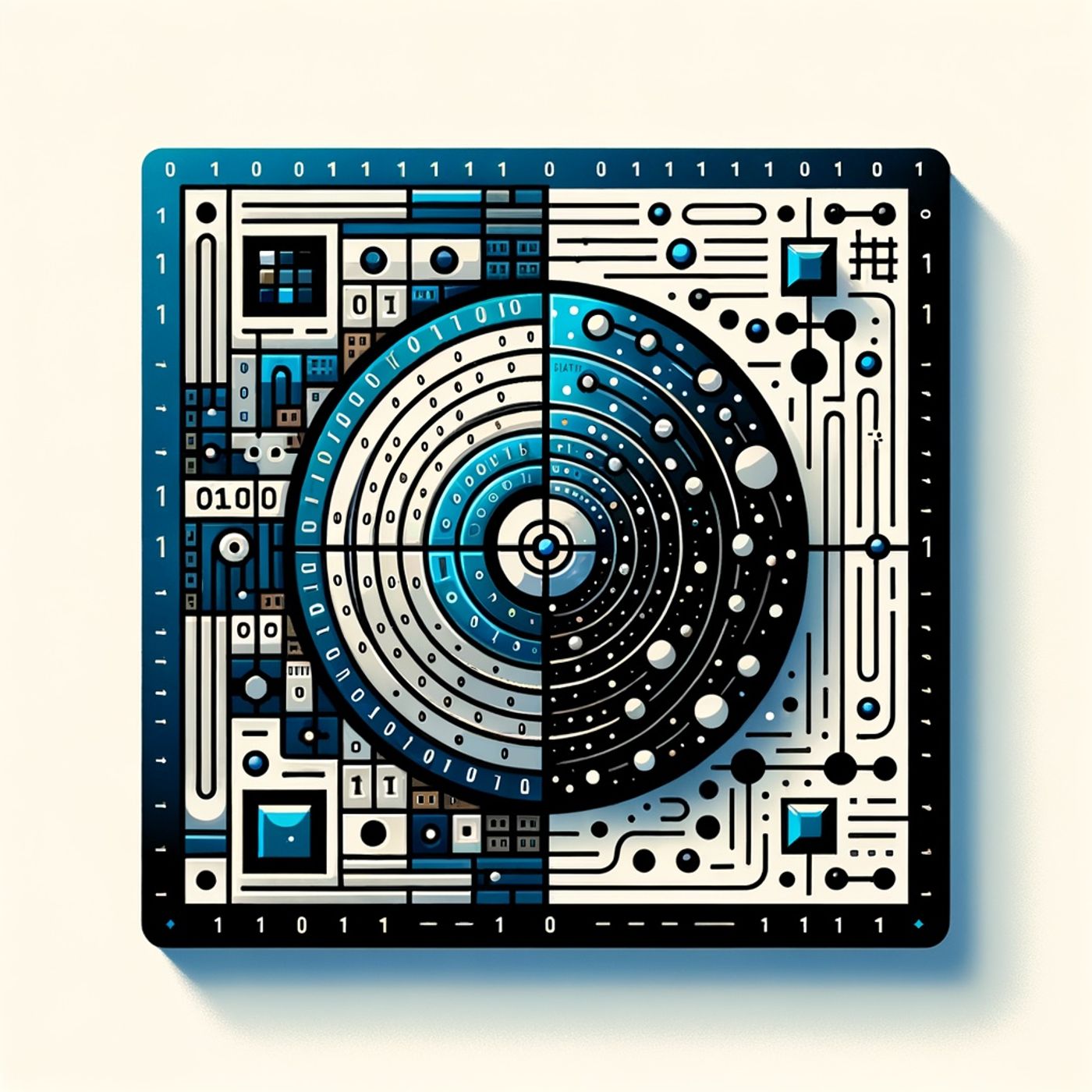Quantum Bits: Beginner's Guide

Quantum Bits: Beginner's Guide
Podcast Description
This is your Quantum Bits: Beginner's Guide podcast.Discover the future of technology with "Quantum Bits: Beginner's Guide," a daily podcast that unravels the mysteries of quantum computing. Explore recent applications and learn how quantum solutions are revolutionizing everyday life with simple explanations and real-world success stories. Delve into the fundamental differences between quantum and traditional computing and see how these advancements bring practical benefits to modern users. Whether you're a curious beginner or an aspiring expert, tune in to gain clear insights into the fascinating world of quantum computing.For more info go to https://www.quietplease.aiCheck out these deals https://amzn.to/48MZPjs
Podcast Insights
Content Themes
The podcast covers a range of topics including advancements in quantum error correction, the transition from physical to logical qubits, and the integration of quantum and classical computing systems. Specific episodes discuss diamond technology for room-temperature quantum computing, hybrid AI systems, and the emerging applications in drug discovery and optimization.

This is your Quantum Bits: Beginner’s Guide podcast.
Discover the future of technology with “Quantum Bits: Beginner’s Guide,” a daily podcast that unravels the mysteries of quantum computing. Explore recent applications and learn how quantum solutions are revolutionizing everyday life with simple explanations and real-world success stories. Delve into the fundamental differences between quantum and traditional computing and see how these advancements bring practical benefits to modern users. Whether you’re a curious beginner or an aspiring expert, tune in to gain clear insights into the fascinating world of quantum computing.
For more info go to
Check out these deals https://amzn.to/48MZPjs
This is your Quantum Bits: Beginner’s Guide podcast.
A flicker of blue light, a shiver in the air—that’s the Helios system roaring to life here at Quantinuum. It’s November 2025, and after a century of theoretical possibility, quantum programming is finally speeding past the onramps and onto the open highway. I’m Leo, your Learning Enhanced Operator, deep in the humming core of today’s quantum labs, and the latest breakthroughs have me on the edge of my quantum seat.
This week, the conversation everywhere is about the debut of Guppy, Quantinuum’s new quantum programming language, released in conjunction with the Helios QPU. Let’s skip the pleasantries and dive right in. Guppy is different—think of it as the difference between learning to drive on a go-kart versus a Formula 1 car. For the first time, programmers can create truly dynamic quantum circuits that adapt in real time to the data streaming out of quantum gates. Before, quantum programs were stiff, mapped out entirely in advance, waiting for nature’s tiniest fluctuations to nudge them off course. With Guppy, it’s as if your program can sense the world, then choose its next move—no more being confined to the rigid plans of old.
But the drama doesn’t end with clever coding. Helios itself makes a bold leap by switching to barium ions as qubits. Why is this electrifying? Barium can be bent and nudged with visible lasers—no more fragile ultraviolet setups—making quantum systems cheaper, more reliable, and, dare I say, beautiful to watch. Laser beams slice through the lab air like lightsabers, gently steering atoms into quantum entanglement.
And here’s the headline grabber: Helios just demonstrated “code concatenation”—a new way to merge error correction directly with quantum operations. Imagine building a Jenga tower, but now the blocks reinforce each other even as you pull them out—fewer pieces make a stronger tower, requiring only a one-to-one physical-to-logical qubit ratio. This milestone allowed Helios to run the largest ever encoded simulation of quantum magnetism—turning Feynman’s dream into practical reality. It’s an analogy that echoes this week’s headlines from the LA Tech Week, where D-Wave’s Emil Hoskinson described simulating magnetic materials in a way once thought impossible for classical hardware.
Guppy—paired with real-time GPU-accelerated decoding from NVIDIA—lets quantum programs leap between classical and quantum instructions, dynamically, instantly, and error-corrected at speeds once reserved for supercomputers. Suddenly, quantum and classical are not rivals, but partners, like dancers trading the lead.
Every week in quantum means a new world. Today, it’s Helios, Guppy, and the rise of programs that learn, adapt, and correct themselves—a revolution at the atomic scale, as if we’ve discovered how to write code in the language of the universe itself.
Thanks for listening to Quantum Bits: Beginner’s Guide. Have questions or ideas? Shoot me an email at [email protected]. Subscribe to Quantum Bits: Beginner’s Guide, and for more insight, visit Quiet Please dot AI. This has been a Quiet Please Production. Until next time—keep your bits entangled and your curiosities superposed!
For more http://www.quietplease.ai
Get the best deals https://amzn.to/3ODvOta
This content was created in partnership and with the help of Artificial Intelligence AI

Disclaimer
This podcast’s information is provided for general reference and was obtained from publicly accessible sources. The Podcast Collaborative neither produces nor verifies the content, accuracy, or suitability of this podcast. Views and opinions belong solely to the podcast creators and guests.
For a complete disclaimer, please see our Full Disclaimer on the archive page. The Podcast Collaborative bears no responsibility for the podcast’s themes, language, or overall content. Listener discretion is advised. Read our Terms of Use and Privacy Policy for more details.